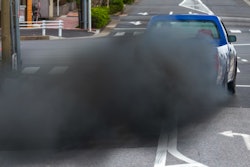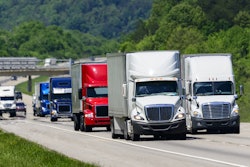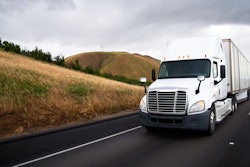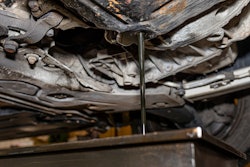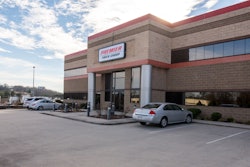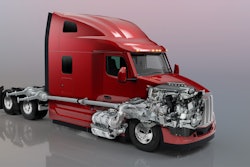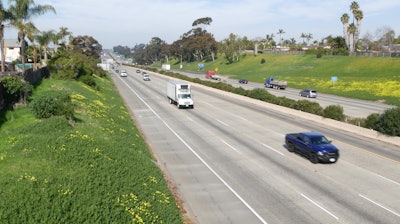
California fleets and their customers are beginning to feel the pinch from the state’s aggressive push toward zero-emission vehicles (ZEVs).
Concerns raised last year about how California’s Air Resources Board’s (CARB) proposed 2024 regulations for trucking could annihilate the dealer channel have not diminished. California dealers got a minor win in January when restrictions on selling equipment out of state was lessened, but for customers in the state hoping to order new medium- and heavy-duty trucks powered by diesel engines, both placing and fulfilling orders remains an uphill battle.
CARB in March announced its intention to align its 2027 regulations with the Environmental Protection Agency (EPA), bringing 50-state engines back to trucking. Until then, trucking in the Golden State will remain in limbo.
Few CARB-compliant diesel engines have hit North American production lines for commercial truck applications, leaving truck owners in the state with the difficult choice of hanging onto trucks beyond their preferred life cycle or purchasing new heavy-duty ZEVs that require infrastructure that’s both costly and takes years to acquire.
Many find both choices unsatisfactory.
“When talking to my sales representative, currently there is not an engine available to meet the Omnibus [mandate],” says Dale Rovito, director of operations at Harris Ranch Beef, which operates nearly 140 power units in California. Harris Ranch Beef has been on a sustainability journey for many years. The company has 28 LNG tractors and has used 100% biodiesel in its other units for six years.
But with hundreds of routes and thousands of customers, Rovito says his fleet is unable to transition to ZEVs at this time. Its route variance requires equipment to operate in regions light on charging infrastructure and its cargo cannot be delayed for extended charging periods.
[RELATED: Renewable diesel a more effective tool to decarbonize trucking than BEV, report says]
“Long-haul tractors need to get from point A to B in a certain amount of time,” he says. “If we have to pull over and charge the truck, that adds time to the driver and thus causes us to lose time.”
The math is incompatible with his operation, Rovito says.
“If you think about time over a year, if the driver must pull over every 180 miles, and charge his trucks for 90 minutes, instead of being able to drive 14 hours, now the driver is only able to drive for a total of 9.5 hours,” he says. “If in 14 hours a driver could do 900 miles, let say, now we are reduced to a 9.5 [hours] and only 615 miles. We just lost 285 miles, and that is just in one day. Multiply that over a year … and this is just one driver.”
And Rovito isn’t alone. The California Trucking Association (CTA) filed suit against CARB last year to block the implementation of the latter’s Advanced Clean Fleets regulation. Carriers in the state have mostly accepted CARB’s prior emission reduction mandates but find the 2024 regulations too onerous.
“Until now, CARB and EPA have imposed regulations that were naturally met with some resistance but for the most part were manageable for most (not all) truckers. This current round of regulations is different in that it forces a technology that simply isn’t ready to meet the demands of the trucking industry,” says Dan Ruoff, maintenance manager at Frank C. Alegre Trucking, which operates more than 170 trucks in the state.
[RELATED: Little information available regarding CARB-certified 2024 engines]
Ruoff says his fleet has explored ZEVs but has not invested in the technology due to limitations.
“When an electric truck is available to do the work that we need it to do, and we won’t go out of business because of it, then we’ll be lining up to buy them. But it is unfair and unrealistic to impose a regulation that simply isn’t feasible to the average trucking company at this date in time. Bottom line,” he says.
Rovito has a similar outlook on ZEV adoption. His fleet even tested an electric feeding truck at one of its facilities but it “could not feed for an entire shift without going dead on battery.”
He wishes state regulators would step back and take more considerations before launching new mandates.
“I know we need cleaner air — especially here in the valley — but I think instead of this ‘all-in’ or ‘milestone’ options, we should replace diesel trucks through attrition,” Rovito says.
Current regulations will force the opposite, some believe.
“You don’t see people driving ’55 Chevy’s around anymore, but if this happens, that’s what is going to happen to us,” Mark Woods, president at Wildwood Express, told TPS in December. “We’re going to have to keep running the same equipment and it’s going to break down. It’s going to need more repairs and that’s going to impact everyone.”
California shippers are worried too.
A group of business leaders speaking to TPS on background in March were in consensus that CARB’s regulations only further drive up costs for all Californians — which already has one of the nation’s highest cost of living averages.
But the business owners also fear backlash from the general population once those higher prices take effect. They take some ownership for that, and are working now to inform the public in hopes of pausing or scrapping future regulations.
“The business community has communicated very clearly with CARB about what the implications of their actions are,” said one source. “We haven’t done as good of a job communicating with the public. What will this mean for an average family? That’s where we are starting to see some success in communicating with legislators.”
[RELATED: What will drive — or inhibit — alternative power adoption?]
Business groups also are trying to be comprehensive with their messaging. Focus has been not just on higher prices of goods due to higher shipping costs, but also how a fleet of older trucks and ZEVs will face more downtime due to repairs, charging and more. The impact to California’s electric grid is part of the messaging too.
“We have extraordinary energy costs here,” said another source. “And the state is pushing trucks to use electricity at the same time it is pushing the economy toward one energy resource.”
Carriers have the same concerns about converting the truck fleet to electricity. California’s power grid is more known for rolling blackouts than excess capacity.
“Infrastructure is nowhere near what the valley needs nor could use,” says Rovito.
Ruoff says he’d like to see discussion around the strides CARB and the state’s trucking community have already made. As the American Trucking Associations (ATA) stated Monday, it “would take 60 of today’s trucks to emit what just one truck did in 1988. A newly manufactured truck produces half the CO2 emissions of one manufactured in 2010.”
Ruoff says if more time was spent in California publicly focusing on how much cleaner the state’s fleet has become, it’s possible CARB wouldn’t feel as forced to push so hard for more progress.
“CARB and the EPA continue to portray the diesel engine as being these black-smoke bellowing vehicles but, the truth is, those days are long gone,” he says. “We’re not saying advancements in BEVs should not continue to be explored. All we’re saying to CARB and the EPA is to recognize how clean the diesel engine has become over the years, largely because of [their] regulations.
“They can take credit for these huge improvements in emission reductions, and we can all thank them for that.”
“We need to educate the public,” adds Rovito. “I talk to people that are not in the trucking industry and they have no idea how trucking works, let alone the regulations that are going to affect them in the future. We need something that shows, ‘This is where the trucking industry was, and this is where we are now.’ Whether it be the reduction of NOx, safety features of a truck, or just how much training goes into driving a truck. Most people think is just a big car, or something that is not driving as fast as them on the freeway and blocking traffic.
“The trucking industry is more important than people know. Remember, if you are purchasing something from a store, it was delivered by a truck.”
In the meantime, the state’s carriers and shippers are preparing for the second half of the year to be a challenge.
[RELATED: How electric trucks may transform dealer revenue streams]
“We haven’t faced any problem getting trucks yet since we pre-ordered last year in preparation for this year,” says Ruoff. “Of course, the manufacturer delays were much longer than normal, but we adjusted for that.
“If we were to place an order for a truck today, our options are very limited.”
Adds Rovito, “We made sure to plan ahead of the regulations and have just enough trucks in our fleet to be able to run for the next few years, or until CARB figures out this is not a viable solution for now. With increasing cost to our fleet and company, we will have to have those hard conversations with our customers in the future.
“These mandates are a reason so many truck companies are closing and or going out of business. It is getting next to impossible to run a freight business in the state of California.”

